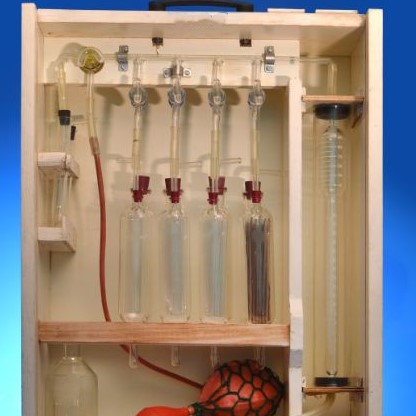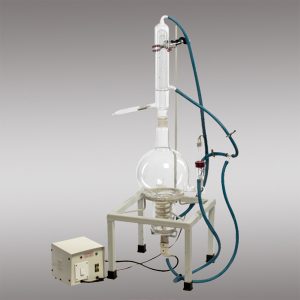
Infralab Binocular Microscope
May 20, 2025
Description
Infralab ORSAT GAS Analyzer Four Test Model
Infralab’s four-test Orsat gas analysis apparatus is a laboratory instrument used to determine the volumetric composition of a gas mixture, typically flue gas from combustion processes. The “four test” designation usually refers to its capability to analyze for four key components:
- Carbon Dioxide (): Absorbed by a solution of potassium hydroxide (KOH).
- Oxygen (): Absorbed by alkaline pyrogallol solution.
- Carbon Monoxide (): Absorbed by ammoniacal cuprous chloride () solution.
- A fourth component, which can vary depending on the specific configuration. It often involves determining Hydrogen () through combustion using a palladium asbestos catalyst in a special pipette (slow combustion pipette). After absorbing , , and , the remaining gas is passed into this pipette where hydrogen is combusted with added oxygen. The contraction in volume indicates the amount of hydrogen. The remaining unabsorbed gas is then typically considered Nitrogen () by difference.
Key Components of Infralab’s Orsat Apparatus:
- Water-Jacketed Gas Burette: A calibrated glass tube (usually 100 ml) where the gas sample is collected and measured. The water jacket helps maintain a constant temperature.
- Leveling Bottle: Connected to the burette by a flexible tube, it contains a liquid (usually acidified water) used to manipulate the gas sample volume and pressure within the burette and absorption pipettes.
- Absorption Pipettes (Four): These contain the chemical solutions that selectively absorb each gas component. For a four-test apparatus, you would typically have pipettes for , , , and then the fourth one for analysis (if included) or another gas. These pipettes often contain glass tubes or other materials to increase the contact surface area between the gas and the absorbent solution.
- Manifold with Stopcocks: A series of glass tubes and stopcocks that allow the controlled passage of the gas sample from the burette to each of the absorption pipettes in sequence.
- Wooden Cabinet: Often, the apparatus is housed in a wooden case for portability and protection.
How it Works (General Principle):
- A known volume (usually 100 ml) of the gas sample is introduced into the burette.
- The gas is passed sequentially into each absorption pipette. After each pass, the reduction in the gas volume in the burette is measured. This reduction corresponds to the volume of the gas component absorbed by the solution in that specific pipette.
- For the fourth test (e.g., for Hydrogen), the remaining gas after the first three absorptions is treated in the specific pipette (e.g., combustion).
- The final remaining gas volume (after all absorptions/reactions) is typically assumed to be nitrogen (and other inert gases not specifically absorbed).



